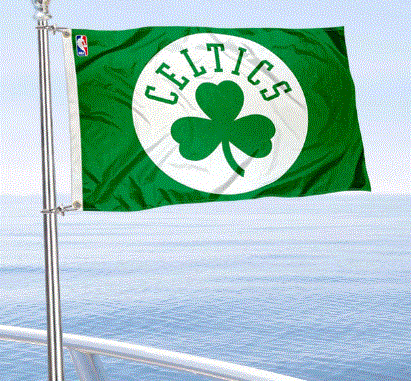
When it comes to iconic franchises in the world of professional basketball, the Boston Celtics are a name that invariably rises to the top. Boasting a storied history that spans over seven decades, the Celtics have earned their place in the annals of NBA greatness.
But what sets them apart? Is it the legendary players, the championship banners hanging in TD Garden, or the Boston Celtics odds that have consistently favored them as contenders? This article delves into the compelling journey of the Boston Celtics, shining a light on both their on-court achievements and the culture that’s come to define them.
The Foundations: Beginnings of a Dynasty
The Boston Celtics, established in 1946, started making waves in the NBA under the leadership of Coach Red Auerbach. In his tenure, Auerbach transformed the team into a powerhouse, acquiring players like Bill Russell – the lynchpin of the Celtics’ defense and a key player in their multiple championship wins during the late 50s and 60s.

The Celtics’ approach to the game was revolutionary. They emphasized fast breaks, team defense, and ball movement, which were not as prevalent in the NBA’s early days. This focus on collective play rather than individual brilliance was one of the first markers of the Celtics’ unique identity.
The Bird Era: Renewed Dominance
Fast-forward to the late 70s and early 80s, and the Celtics found their next icon – Larry Bird. Drafted in 1978, Bird was emblematic of the Celtics’ ethos: hardworking, tenacious, and an ultimate team player. With Bird at the helm, flanked by stalwarts like Kevin McHale and Robert Parish, the Celtics not only won championships but also showcased a brand of basketball that was both effective and enthralling.
It was during this era that the Celtics-Lakers rivalry, spurred by Bird’s duel with Magic Johnson, reached its zenith, capturing the imagination of basketball fans worldwide.
Challenges and Rebuilding: The 90s and Early 2000s
Like all great dynasties, the Celtics had their period of decline. The 90s and early 2000s saw them grappling with the challenges of rebuilding. The retirements of their marquee players and the tragic death of their rising star, Reggie Lewis, hit the franchise hard.
However, even in these trying times, the Celtics’ commitment to their core values remained unwavering. They consistently scouted and nurtured young talents, a testament to their belief in long-term vision over short-term gains.
The Big Three and the 17th Banner
The mid-2000s heralded a new era for the Celtics. The assembly of the ‘Big Three’ – Paul Pierce, Kevin Garnett, and Ray Allen – under the guidance of Coach Doc Rivers, was a masterstroke. This strategic move saw the perfect amalgamation of seasoned talent and emerging players like Rajon Rondo.
The 2008 NBA Championship win against the Lakers was not just a testament to their superior gameplay but also a tribute to the Celtics’ ability to reinvent themselves while staying true to their roots.
The Modern Era: Looking Ahead
The Boston Celtics of today continue to be a force to reckon with in the Eastern Conference. With young talents like Jayson Tatum and Jaylen Brown, the Celtics are a mix of the old and new – honoring their rich legacy while constantly evolving with the dynamic nature of modern basketball.
This balance between respecting tradition and embracing innovation is what keeps the Celtics relevant and perennial championship contenders.
Conclusion
The Boston Celtics are more than just a basketball team; they are an institution. Their journey, dotted with triumphs and challenges, serves as a blueprint for sustained excellence in professional sports. While championships and accolades are crucial, it’s their unwavering commitment to core values, team-first mentality, and a forward-looking vision that sets them apart.
As we reminisce about their storied past and look ahead with anticipation, one thing is clear – the Boston Celtics’ legacy is about more than just basketball; it’s about building a tradition of greatness.
Leave a Reply